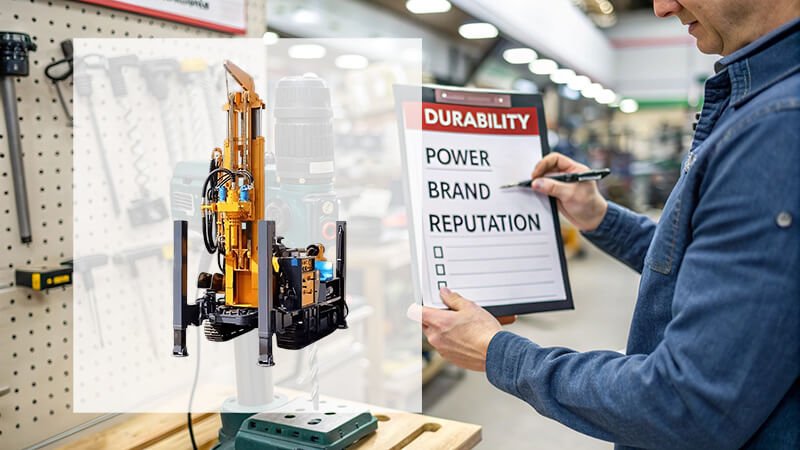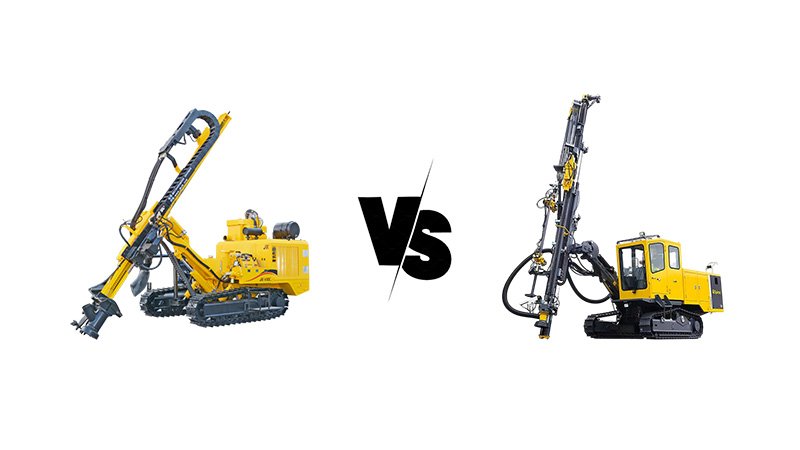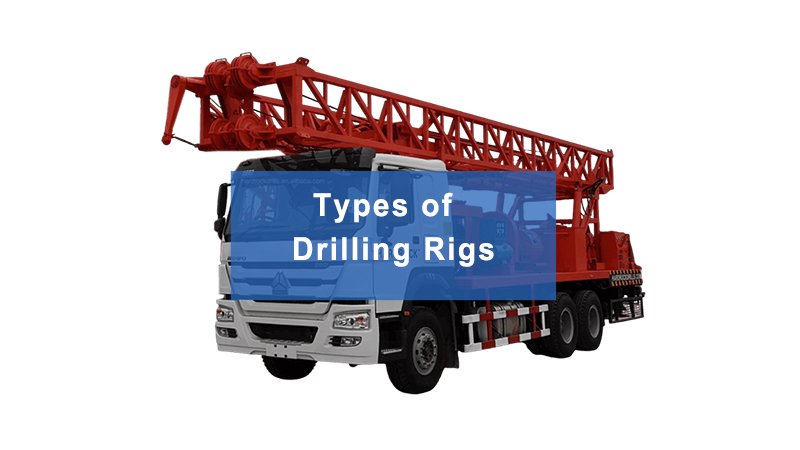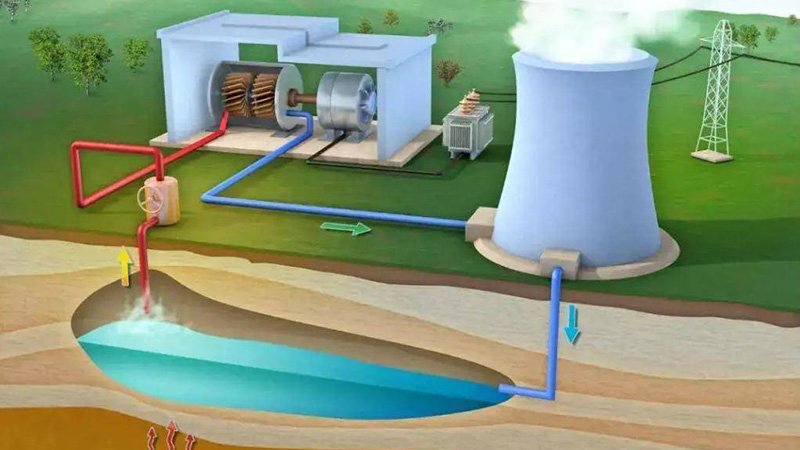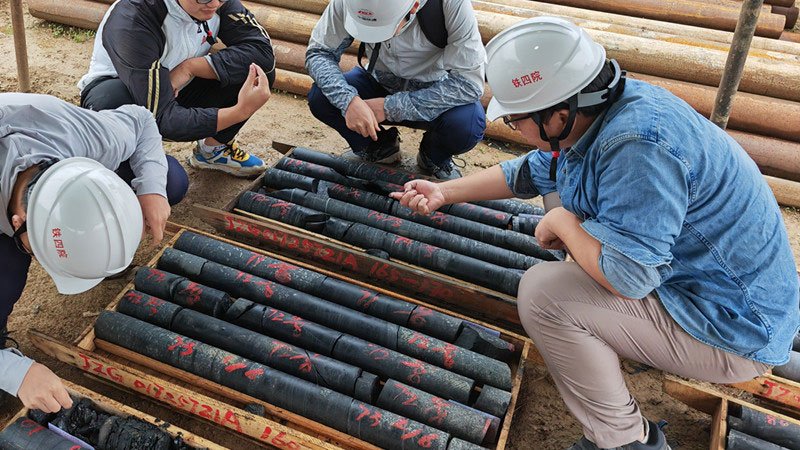Feeling overwhelmed by the countless drilling machine options on the market? Making the wrong choice could cost you time, money, and project delays. I can help simplify this complex decision.
Buying a drilling machine requires identifying your specific project needs, researching available types, comparing technical specifications, evaluating manufacturers, checking after-sales support, and considering total ownership costs beyond the initial price.
I've spent years helping customers at Hardrock find their perfect drilling machine. Through this experience, I've learned that successful buyers look beyond flashy features and low prices. They understand that finding the right drilling solution is really about matching the machine to their unique operating conditions and business goals.
What Types of Drilling Machines Are Available in the Market?
Are you confused about which type of drilling machine suits your needs? The wrong choice could lead to inefficiency, higher costs, and project failures in the field.
The market offers various drilling machines including water well rigs, geotechnical drilling rigs, core drilling rigs, foundation drilling rigs, DTH hammer rigs, and directional drilling machines, each designed for specific applications and ground conditions.
At Hardrock, we manufacture several drilling machine categories to serve different industry needs. Let me walk you through the main types:
Water well drilling rigs are designed specifically for accessing groundwater. They typically use rotary, DTH hammer, or cable tool methods and can drill from shallow depths to over 1,000 meters depending on the model. These machines come in truck-mounted, trailer-mounted, or crawler-mounted configurations for different mobility requirements.
Geotechnical drilling rigs are more specialized, used for soil investigation, environmental sampling, and foundation testing. They're typically more compact than water well rigs and often include SPT (Standard Penetration Test) equipment and core sampling capabilities. These machines prioritize sample quality over drilling speed.
Foundation drilling rigs are heavy-duty machines designed for construction projects. They create large-diameter holes for building foundations, bridge supports, and retaining walls. Many can install casings and pour concrete directly through the drill string.
Exploration drilling rigs focus on mineral and resource exploration. They're designed to collect core samples from deep underground with minimal disturbance to the sample. These rigs emphasize accuracy and sample quality.
Geothermal drilling machines are optimized for installing ground-source heat exchange systems. They can drill multiple shallow holes or fewer deep boreholes depending on the system design.
Directional drilling machines can drill at angles or even horizontally. They're used for utility installation, pipeline construction, and accessing resources under sensitive surface areas.
I remember when Mohammed from Dubai visited our factory last year. He came thinking he needed a standard water well rig, but after discussing his projects in detail, we realized a combination rig with both water well and geotechnical capabilities would better serve his diverse contract work. This approach saved him from purchasing two separate machines.
How Much Does a Drilling Machine Cost?
Worried about budgeting for your drilling machine purchase? Prices vary dramatically, and unexpected costs can quickly exceed your budget if you're not careful.
Drilling machine prices range from $30,000 for basic portable models to over $2 million for advanced deep-drilling rigs. Mid-range professional machines typically cost between $100,000 and $500,000 depending on capabilities, power, and features.
When customers ask me about pricing at Hardrock, I explain that several factors influence the final cost. The drilling depth capacity is a major price determinant – machines that can reach greater depths require stronger components, more powerful engines, and more sophisticated controls.
The drilling diameter capability also affects price substantially. Larger diameter drilling requires more torque and robust construction, driving up costs. The mounting system is another important factor – crawler-mounted rigs cost more than trailer-mounted ones but offer better off-road mobility.
Power systems significantly impact price. Hydraulic systems offer precise control but cost more than mechanical systems. More powerful engines and compressors increase costs but improve capability and efficiency.
Automation features like auto-rod handling systems, computerized controls, and remote operation capabilities add considerable cost but improve safety and reduce labor requirements. Auxiliary equipment such as mud pumps, compressors, and water tanks may be included in some packages but sold separately with others.
Beyond the initial purchase price, I always advise customers to consider the total cost of ownership. This includes:
- Transportation costs to job sites
- Operator training
- Fuel consumption
- Regular maintenance expenses
- Parts replacement
- Expected service life
I recently helped a customer from Southeast Asia who was initially attracted to a low-priced rig from a competitor. After calculating five-year ownership costs, including projected maintenance and fuel consumption, he realized our mid-range model actually offered better value despite a 15% higher purchase price.
What Are the Key Features to Look for When Buying a Drilling Machine?
Do you feel uncertain about which features matter most? With countless specifications to consider, focusing on the wrong ones could leave you with an unsuitable machine.
Key features to look for in a drilling machine include appropriate depth capacity, adequate power, suitable drilling methods, proper mobility options, operator comfort/safety features, automation level, and parts availability.
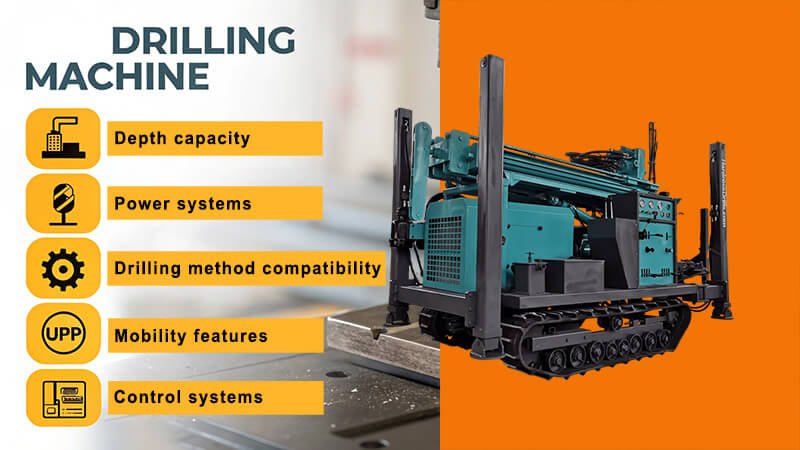
At Hardrock, I've guided hundreds of customers through the feature selection process. Here are the most important considerations:
Depth capacity must match your project requirements with some margin for unexpected situations. I recommend choosing a machine with at least 20% more depth capacity than your typical projects require. This provides flexibility for future needs.
Power systems should align with your operating environment. Diesel engines remain popular for their reliability and fuel availability worldwide. However, some operations in environmentally sensitive areas might benefit from electric-powered units. The hydraulic system should provide stable, smooth operation even in challenging conditions.
Drilling method compatibility is crucial. Some projects require multiple drilling methods. Modern combination rigs can switch between mud rotary, air rotary, and DTH hammer drilling, providing versatility for different geological formations.
Mobility features should match your typical work sites. For frequent relocation between distant sites, truck-mounted rigs offer the best transportation efficiency. For off-road access, crawler-mounted units provide superior mobility. For urban areas with space constraints, compact rigs with minimal footprint may be essential.
Control systems range from basic manual controls to sophisticated computerized interfaces. The right choice depends on operator skill levels and job complexity. Advanced systems offer more precise operation and data logging but require more training and maintenance.
Safety features should never be compromised. Look for emergency shutdown systems, guard rails, anti-fall protection, pressure relief valves, and proper guarding of moving parts. Our rigs at Hardrock include backup safety systems for critical functions.
Comfort features like climate-controlled cabins, ergonomic controls, and reduced noise levels improve operator productivity and retention. These features add cost but pay off through reduced fatigue and fewer errors.
I recently worked with a contractor who initially dismissed the value of our advanced control system. After a demonstration showing how it prevented potential errors during difficult drilling conditions, he understood how this feature could prevent costly mistakes and equipment damage.
Which Brands Are Most Reliable for Drilling Machines?
Are you worried about investing in an unreliable brand? With so many manufacturers making big promises, how can you identify truly dependable equipment?
The most reliable drilling machine brands have long-standing industry presence, extensive dealer networks, readily available parts, comprehensive warranties, positive customer reviews, and proven performance records in challenging conditions.

While I'm proud of our Hardrock brand, I believe customers benefit from understanding the broader market. Reliability stems from several factors worth evaluating:
Manufacturing experience matters significantly. Companies with decades of drilling equipment production have refined their designs through countless field experiences. They've encountered and solved problems newer manufacturers haven't yet faced. Look for brands with at least 10-15 years of continuous production.
Engineering standards vary widely between manufacturers. The best companies employ qualified engineers, use computer-aided design, conduct extensive testing, and follow international quality standards. During factory visits, look for modern fabrication equipment, quality control processes, and organized assembly areas.
Material quality directly impacts machine longevity. Leading manufacturers use high-grade steel for structural components, precision-machined parts for critical systems, and name-brand components for hydraulics and electronics. Be wary of manufacturers who can't specify their material sources.
Warranty terms reveal a manufacturer's confidence in their equipment. Look beyond the warranty duration to understand what's covered, exclusions, and the claim process. Some manufacturers offer extended warranties or special coverage for critical components.
Parts availability is crucial for minimizing downtime. The best manufacturers maintain extensive parts inventories and can ship emergency parts quickly worldwide. Ask about typical lead times for common wear parts and major components.
Customer support capability distinguishes top brands. Leading manufacturers offer 24/7 technical support, field service technicians, and comprehensive training programs. They should provide detailed documentation in relevant languages.
I remember when a customer visited several factories before coming to Hardrock. He told me about one facility where they wouldn't allow visitors in certain areas and couldn't provide material certifications. At our factory, we proudly show customers our entire production process, from raw materials to finished machines, with complete transparency.
What Are the Maintenance Requirements Before Buying a Drilling Machine?
Are you concerned about keeping your drilling machine running smoothly? Unexpected maintenance issues can cause costly downtime and project delays if not properly anticipated.
Before buying a drilling machine, understand its preventive maintenance schedule, daily service points, wear part replacement intervals, specialized tool requirements, fluid specifications, and recommended spare parts inventory.

At Hardrock, we believe maintenance considerations should influence your purchase decision significantly. Here's what I advise customers to evaluate:
Service interval requirements vary between machines. Some require intensive maintenance at short intervals, while others offer longer periods between services but need more extensive work when serviced. Understand the machine's maintenance schedule and how it will impact your operation. Our machines come with detailed maintenance charts showing daily, weekly, monthly and annual requirements.
Service point accessibility can dramatically affect maintenance time and quality. Well-designed machines provide easy access to filters, grease points, fluid check points, and commonly serviced components. During machine demonstrations, ask to see how routine maintenance tasks are performed.
Special tool requirements should be clearly understood. Some machines need proprietary tools for certain maintenance procedures. At Hardrock, we include all special tools with our drilling machines and clearly document their use.
Wear part durability varies significantly between manufacturers. Parts like drill rod connectors, seals, bearings, and hydraulic hoses might need frequent replacement on some machines but last much longer on better-designed units. Ask for expected lifetime data for common wear parts under typical operating conditions.
Technical skill requirements for maintenance should match your team's capabilities. Some advanced machines require specialized knowledge of electronic systems or hydraulic circuits. We offer comprehensive training programs for maintenance technicians to ensure they can properly service our equipment.
Documentation quality makes a huge difference in maintenance outcomes. The best manufacturers provide detailed service manuals with clear illustrations, troubleshooting guides, and parts catalogs in relevant languages. Our manuals include QR codes linking to video demonstrations of key procedures.
One of my customers in Africa initially chose a competitor's machine with a slightly lower purchase price. Within two years, he switched to our equipment because maintenance costs and downtime with the other machine eroded any initial savings. The competitor's complex hydraulic system required specialist technicians to fly in for repairs, while our simpler, more robust design could be maintained by his local team.
How to Compare Different Drilling Machine Models?
Feeling overwhelmed by technical specifications and competing claims from different manufacturers? Without a systematic comparison approach, you might miss critical differences between models.
Compare drilling machines by creating a standardized evaluation matrix covering technical specifications, performance metrics, ownership costs, support services, and manufacturer reputation, then weighting factors according to your specific project requirements.
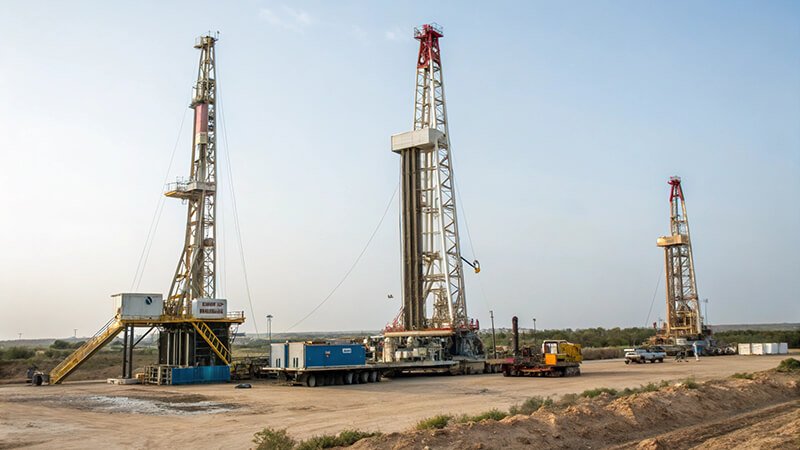
I've helped many customers develop effective comparison frameworks at Hardrock. Here's the approach I recommend:
Create a comprehensive comparison matrix that goes beyond basic specifications. Include the following categories:
- Technical capabilities - Include drilling depth, hole diameter range, applicable drilling methods, engine power, torque output, pull-back force, and feed system specifications.
- Performance metrics - Look at drilling speed in relevant formations, fuel efficiency, setup/teardown time, and mobility characteristics.
- Operational considerations - Evaluate ease of operation, noise levels, automation features, and operator comfort/safety features.
- Total cost factors - Compare purchase price, estimated operating costs, maintenance requirements, and expected resale value.
- Support services - Assess warranty terms, parts availability, technical support quality, and training programs.
Weight factors according to your priorities. A company primarily drilling water wells in remote areas might prioritize reliability and ease of maintenance over drilling speed. A contractor working in urban environments might value low noise operation and compact footprint more heavily.
Request detailed specifications in writing from manufacturers. Be wary of vague claims or missing information. Reputable manufacturers provide comprehensive technical data.
Seek verifiable performance data rather than theoretical capabilities. Ask for references who use the machine in conditions similar to yours.
Arrange demonstrations whenever possible. Seeing machines in operation reveals practical differences that specifications don't capture. Pay attention to noise levels, vibration, control responsiveness, and ease of operation.
Consider fleet compatibility if you already own drilling equipment. Using machines from the same manufacturer can streamline maintenance, parts inventory, and operator training.
Mohammed's company uses a detailed scoring system when evaluating new equipment. Each specification and feature receives a weighted score based on his project requirements. This systematic approach has helped him make consistent, objective purchasing decisions even when comparing very different machine types.
Conclusion
Buying a drilling machine requires careful consideration of your specific project needs, thorough research of available options, and evaluation of both technical specifications and long-term ownership factors. The right machine matches your operating conditions while providing reliability and value throughout its service life.

